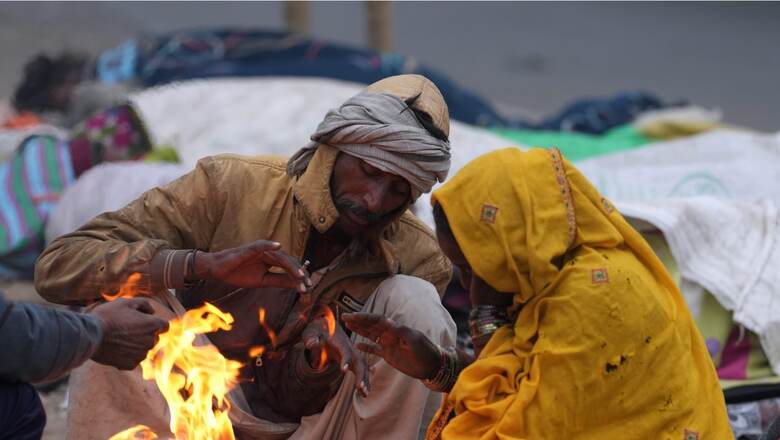
views
2023 ended as the second-warmest year on record for India in almost 100 years with the annual mean land-surface temperature 0.65℃ above the long-term average. The highest-ever warming of nearly 0.70℃ was recorded in 2016, said the India Meteorological Department (IMD).
The minimum temperatures remained abnormally high in 2023 during the winter season (January-February) as well as the entire monsoon season (June-September) triggering a series of extreme weather events – floods, thunderstorms and heatwaves. Over 1,270 lost their lives to deadly thunderstorms mostly in Bihar, and state-wide floods claimed over 860 lives as per the reports. The scorching heat waves were equally disastrous, killing at least 160 people.
February and August were the warmest in a century, when the rainfall was also the lowest-ever. “There has been a long-term trend of increasing annual temperatures. The minimum temperatures are rising by 0.3℃, while the maximum and mean temperatures are rising by almost 1℃ and 0.66℃ per 100 years respectively. We have seen it happening over most parts of the country,” said Dr M Mohapatra, Director-General of Meteorology, IMD.
HIGHEST-EVER RAINFALL FOR SOUTHERN INDIA SINCE 2001
While Himachal Pradesh bore the brunt of severe floods during the summer monsoon, the floods in December left a trail of destruction in Tamil Nadu and Andhra Pradesh during the north-east monsoon. According to IMD, both the southern peninsula as well as north-east India received the highest rainfall in December since 2001. “There were two weather systems, including Cyclone Michaung, which crossed the Indian coast in December that brought excess rainfall over the states. The rainfall was excess over the southern-peninsula with over 144 very heavy rainfall events and 54 extremely heavy rainfall events (204 mm) – highest since 2018,” said the IMD Chief.
While overall the country saw excess rains, it was deficient by 65% for Northwest India, with subpar western disturbances known to cause winter rains.
The cyclone activity was higher than normal in 2023 with as many as six cyclones forming over the north Indian Ocean, although only two crossed the Indian coast – Biparjoy and Michaung.
Out of six, three of them were extremely severe cyclonic storms. But the Arabian Sea was more active than the Bay of Bengal. “All of them crossed some coast, and all of these cyclones had recurving tracks, which were difficult to predict,” said the IMD Chief.
GOOD RAINS, BUT FEWER COLD WAVE DAYS IN 2024 WINTER
According to the weather department, the country is expected to witness good rainfall activity during the next three months. Since the number of cold wave days are likely to be below-normal, there should not be any adverse impact for the Rabi crops, as per IMD. However, the precipitation (rain/snow) in the extreme northern parts – J&K, Ladakh and Himachal Pradesh is expected to be deficient.
“The minimum temperatures are definitely higher-than normal this winter. There were no significant cold wave conditions over any part of the country in December. We predict a similar situation for January, with below-normal cold wave days,” he added.
Fog has begun to clear, but is expected to remain for the next four days. The IMD has also released cold day to severe cold day warning for Punjab, Haryana, Uttar Pradesh and north Rajasthan for the next two days, and said it will decrease thereafter.




















Comments
0 comment